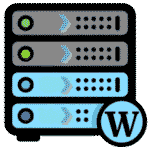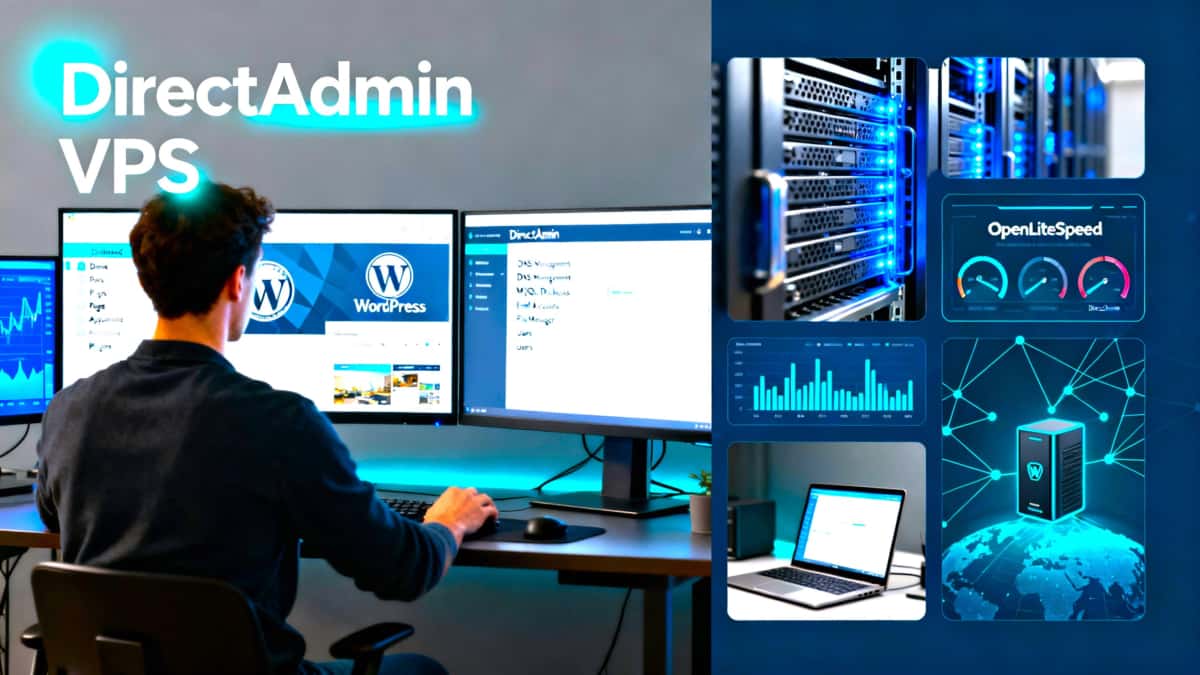DirectAdmin & essentials: step-by-step VPS setup
Build a stable, low‑cost unmanaged VPS from scratch and get it ready for domains. Follow a tested path using AlmaLinux 10, DirectAdmin, OpenLiteSpeed, solid DNS/SSL, and email deliverability. Clear steps, verified commands, and quick checks at every stage.
- Start Here: the complete step‑by‑step roadmap
- Browse by Category
- Latest Guides
We’re Brand NEW! 
Revisit often as DirectAdmin VPS just started in November, 2025. We strive for 1-2 posts each week, as we progress through all phases of installing, configuring, and using an unmanaged VPS with DirectAdmin. Did I mention that this site is running on the exact stack that we’re writing about?
What you’ll accomplish
- Provision a VPS and secure SSH access on Windows (PuTTY)
- Configure AlmaLinux 10 with updates, hostname/FQDN, and time sync
- Install DirectAdmin correctly and set up ADMIN backups
- Configure CustomBuild, install OpenLiteSpeed, and verify PHP integration
- Bring domains online with DNS, nameservers, SSL, and rDNS
- Achieve solid email deliverability with SPF, DKIM, and DMARC
- Establish backups, firewall, updates, and recovery drills
Who this site is for
- Solo admins and builders who want predictable control without managed hosting costs
- Anyone comfortable pasting commands and following checklists
How to use this guide
- Start with the roadmap, then follow Previous/Next links at the top and bottom of each post
- Use category overviews for context and prerequisites
- When the platform is ready, hand off WordPress app setup to WordPressBricks.com
Stage 1: Provisioning & Base Setup
- Choose an Unmanaged VPS Plan + Registrar Basics
- Prepare VPS and Local PC; Create/Rebuild the Server
- Set Up PuTTYgen/PuTTY on Windows and Verify SSH
- AlmaLinux 10 Post‑Install Updates and Baseline Configuration
- Install DirectAdmin Using Environment Variables (Skip Custom Conf Upload)
- Install OpenLiteSpeed and Verify Integration with DirectAdmin/PHP
- Optional: Restore baseline configs; Optional: Run simple benchmarks
Stage 2: DirectAdmin Setup
- Custom DirectAdmin Install: Step-by-Step Guide
- First‑Login Tasks: Secure Admin + Schedule ADMIN Backups
- Change DirectAdmin Password: Multiple Ways
- CustomBuild Options and Routine Updates
- Softaculous Setup in DirectAdmin (Primary Domain)
Stage 3: Domains, DNS & Email
- Create a New Domain in DirectAdmin (Primary vs Addon vs Subdomain)
- DNS and Nameservers: Configure Records in DA and Update at Registrar
- SSL Certificates: Let’s Encrypt and Custom Certificates
- Reverse DNS (rDNS) for the Primary Domain
- Email Deliverability: SPF, DKIM, DMARC End‑to‑End
- Mail Ports Verification and Troubleshooting
- Per‑Domain PHP Settings Changes
- Update Domain’s Admin Mail Identity
- Redis USER Configuration (Primary Domain) [optional]
Stage 4: Operations & Recovery
- System Backups Configuration
- Firewall Baseline and Safe Updates/Patches Workflow
- Disaster Recovery Drill: Perform and Validate a Backup Restore
- Monitoring, Logs, and Security Hygiene [optional]
What’s included in each guide
- Prerequisites and estimated time
- Copy‑paste commands in code blocks
- Verification steps to confirm success
- Common errors and quick fixes
- Internal links to prerequisites and next steps
Popular quick links
- Start Here (Roadmap)
- DirectAdmin install using environment variables
- DNS and nameservers setup
- SSL with Let’s Encrypt in DirectAdmin
- SPF, DKIM, DMARC configuration
- System backups configuration
Why this stack
- AlmaLinux 10: stable, enterprise‑grade base
- DirectAdmin: lightweight control panel with clear tooling
- OpenLiteSpeed: fast, efficient web server
- Clear DNS/SSL/email practices: fewer surprises and better deliverability
Performance and security basics
- Key‑based SSH, enforced HTTPS, and minimal plugins
- Server‑level caching and HTTP/3 where applicable
- Routine updates with a simple rollback plan
After Your VPS is Setup, Continue Here
- WordPress app‑level installs, tuning, and caching configurations live at WordPressBricks.com. You’ll see a handoff link at the end of the last phase so you can continue for WordPress website install & setup.
Ready to begin?
Open the Start Here roadmap and follow the sequence to build your VPS the right way.

